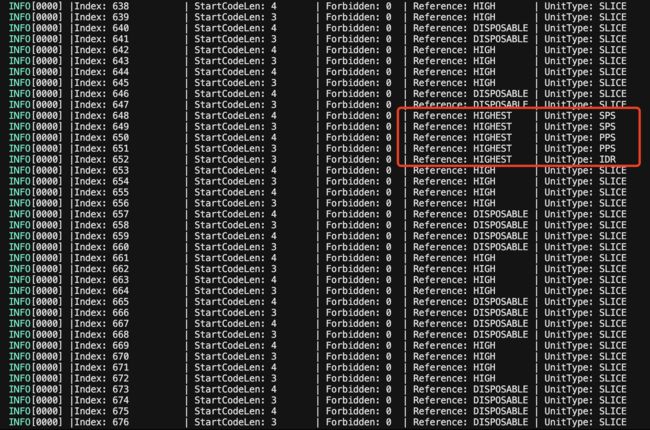- client-go: k8s选主
快速上手下面这个代码就是一个选主的大概逻辑packagemainimport("context""flag""fmt"_"net/http/pprof""os""path/filepath""time""golang.org/x/exp/rand"v1"k8s.io/api/core/v1"metav1"k8s.io/apimachinery/pkg/apis/meta/v1""k8s.io/ap
- 涨薪技术|Prometheus中部署Alertmanager
部署Alertmanager是Prometheus生态系统中的一个重要步骤,用于管理和处理Prometheus生成的告警。Alertmanager和PrometheusServer一样均采用Golang实现,并且没有第三方依赖。一般来说我们可以通过以下几种方式来部署Alertmanager:二进制包、容器以及源码方式安装。1二进制包部署1)获取并安装软件包Alertmanager最新版本的下载地址
- Golang利用Protocol Buffers优化网络通信
Golang编程笔记
Golang开发实战golang开发语言后端ai
Golang利用ProtocolBuffers优化网络通信关键词:Golang、ProtocolBuffers、网络通信、序列化、性能优化、Protobuf、gRPC摘要:在现代互联网应用中,网络通信的效率直接影响系统性能。本文将带你一步步探索如何用Golang与ProtocolBuffers(简称Protobuf)结合,优化网络通信。我们会从基础概念讲起,通过生活案例理解Protobuf的优势,
- Gin框架路由
TZX_0710
介绍Gin是一个golang的微框架,封装比较优雅,API友好,源码注释比较明确,具有快速灵活,容错方便等特点对于golang而言,web框架的依赖要远比Python,Java之类的要小。自身的net/http足够简单,性能也非常不错借助框架开发,不仅可以省去很多常用的封装带来的时间,也有助于团队的编码风格和形成规范安装1.安装Gingoget-ugithub.com/gin-gonic/gin2
- golang语法-----指针
查理养殖场
编程语言笔记golang开发语言
一、核心语法1、取地址符&,用在一个变量前面,获取这个变量的内存地址。packagemainimport"fmt"funcmain(){name:="Alice"//变量name,它的值是"Alice"//&name获取变量name的内存地址//p是一个指针变量,它存储了name的地址//p的类型是*string,读作"string类型的指针"p:=&namefmt.Println("变量name
- Go 语言开发工具
沐知全栈开发
开发语言
Go语言开发工具引言Go语言,又称Golang,自从2009年由Google发布以来,凭借其简洁、高效、并发性能出色等特性,迅速在软件开发领域崭露头角。Go语言开发工具的丰富性也成为了其受欢迎的重要原因之一。本文将详细介绍Go语言开发过程中常用的一些工具,以帮助开发者提高工作效率。一、Go语言环境搭建1.Go语言安装首先,我们需要下载并安装Go语言环境。从官方网站(https://golang.o
- golang的编译过程分析
转载自:https://halfrost.com/go_command/引言Go语言这两年在语言排行榜上的上升势头非常猛,Go语言虽然是静态编译型语言,但是它却拥有脚本化的语法,支持多种编程范式(函数式和面向对象)。Go语言最最吸引人的地方可能是其原生支持并发编程(语言层面原生支持和通过第三方库支持是有很大区别的)。Go语言的对网络通信、并发和并行编程的支持度极高,从而可以更好地利用大量的分布式和
- Golang 数据库缓存策略:减少 SQL 查询次数
Golang数据库缓存策略:减少SQL查询次数关键词:Golang、数据库缓存、SQL查询次数、缓存策略、性能优化摘要:本文主要探讨了在Golang中使用数据库缓存策略来减少SQL查询次数的相关技术。通过深入讲解缓存的核心概念、算法原理、实际应用场景等内容,帮助读者理解如何利用缓存优化数据库性能。同时,结合具体的代码案例,详细展示了在Golang中实现缓存策略的方法,最后分析了未来的发展趋势与面临
- 端到端神经网络视频编解码器介绍
码流怪侠
音视频基础深度学习-PyTorch神经网络视频编解码人工智能githubDCVC端到端神经网路音视频
一、技术演进:从模块优化到全局智能的范式跃迁传统编解码器的效率天花板(1990-2017)架构局限:H.264/HEVC依赖手工设计的运动估计、DCT变换、熵编码模块,各模块独立优化导致全局效率损失。高分辨率瓶颈:4K/8K视频普及后,码率与画质矛盾激化,HEVC在VR场景下码率仍需>20Mbps才能保持无伪影画质。端到端神经编解码的爆发期(2017-2024)2017奠基年:Ballé团队提出超
- Golang面试题二(slice,map,chan)
os-lee
go高级golang开发语言后端
目录1.slice的底层实现1.结构体定义2.slice四种初始化方式3.底层函数2.Go语言当中数组和slice的区别是什么?1.长度不同2.函数传参不同3.计算长度方式不同3.slice的扩容机制,有什么注意点扩容机制总结4.扩容前后的Slice是否相同5.深拷贝和浅拷贝浅拷贝(ShallowCopy)深拷贝(DeepCopy)总结6.slice为什么不是线程安全的7.map底层实现8.map
- Golang map
m0_67393686
javagolangjava数据结构后端apache
前言哈希表是一种巧妙并且实用的数据结构。它是一个无序的key/value对的集合,其中所有的key都是不同的,然后通过给定的key可以在常数时间复杂度内检索、更新或删除对应的value。在Go语言中,一个map就是一个哈希表的引用,map类型可以写为map[K]V,其中K和V分别对应key和value。map中所有的key都有相同的类型,所有的value也有着相同的类型,但是key和value之间
- 【go基础】4.基本数据结构之map
喝醉的小喵
go语言原理golang数据结构哈希算法后端
目录哈希表map-主要思想-特点-哈希函数-数据结构-map初始化-mapvalue为什么不能寻址-map为什么是无序的-map为什么是o(1)的-开发时应注意的哈希表map理解Golang哈希表Map的原理|Go语言设计与实现彻底理解GolangMap-知乎-主要思想1、桶map的底层存储结构式hmap,里面有一个桶数组,所有kv都是存在这些桶里的,每个桶的结构是bmap每个桶中最多可以存8个k
- map数据结构在Golang中是无序的,并且键值对的查找效率较高的原因
map,map在Go语言中是无序的,是因为在Go语言中,map基于哈希表实现,它的遍历顺序依赖于哈希表内部存储状态,对并发编程的潜在影响包括可能引发数据一致性问题,也就是并发度写实易导致读到不一样的数据或遍历出错;还会导致结果可重复性的问题,即每次运行程序得到的依赖遍历顺序的计算结果可能不同。map的键值对查找效率高是由于:(1)哈希表的时间复杂度,哈希表的平均复杂度为O(1),最欢情况下为O(n
- Golang 数据类型有哪些?
一个完整的项目需要更复杂的逻辑,不是简单的“Hello世界”可相比的。这些逻辑通过变量、常量、类型、函数方法、接口、结构体组成,这节课我就将带你认识它们,让你的Go语言程序变得更加生动。内置类型值类型boolint(32or64),int8,int16,int32,int64uint(32or64),uint8(byte),uint16,uint32,uint64float32,float64st
- 深入解析Golang中的defer机制:从cch123/golang-notes看实现原理
深入解析Golang中的defer机制:从cch123/golang-notes看实现原理golang-notesGosourcecodeanalysis(zh-cn)项目地址:https://gitcode.com/gh_mirrors/go/golang-notes前言在Go语言中,defer语句是一种非常实用的特性,它允许我们在函数返回前执行某些操作。本文将基于cch123/golang-n
- Golang defer 的编译器实现细节
Golang编程笔记
golang开发语言后端ai
Golangdefer的编译器实现细节:从语法糖到运行时的全链路解析关键词:Go语言、defer、编译器优化、运行时、延迟执行摘要:本文将深入解析Go语言中defer关键字的底层实现细节。我们将从defer的基础用法出发,逐步拆解编译器如何将defer语法转换为机器可执行的代码,并结合Go编译器的优化历史(如开放编码优化)、运行时关键结构体(_defer)以及实际汇编代码,揭示defer从“语法糖
- 探索 Golang 与 Docker 集成的无限可能
Golang编程笔记
golangdocker开发语言ai
探索Golang与Docker集成的无限可能关键词:Golang、Docker、容器化、微服务、云原生、镜像优化、CI/CD摘要:本文将带你走进Golang与Docker集成的奇妙世界。我们会从“为什么需要这对组合”讲起,用生活故事类比核心概念,拆解Go静态编译与Docker容器化的“天作之合”,通过实战案例演示如何用Docker高效打包Go应用,并探讨它们在云原生时代的无限可能。无论你是Go开发
- Golang类型断言在反射中的应用:深入源码分析
Golang编程笔记
Golang编程笔记golang网络服务器ai
Golang类型断言在反射中的应用:深入源码分析关键词:Golang、类型断言、反射、运行时、接口、类型系统、源码分析摘要:本文深入探讨Golang中类型断言与反射机制的底层关联,通过解析Go运行时源码和反射包实现,揭示类型断言在反射场景中的核心作用。从接口类型的内存布局出发,分析类型断言的两种实现形式(安全断言与暴力断言)在反射API中的具体应用,结合实际案例演示如何通过反射动态获取类型信息并进
- 以下哪种类型在Golang中不是内置类型?
小高Baby@
go
A.intB.stringC.structD.array首先,内置类型是指不需要引入任何关于这些数据类型的包,就可以引用的数据类型。那么,内置类型主要包括基本类型,复合类型,控制并发,高级抽象,特殊类型。基本类型包括,整型,浮点型,布尔型,字符串,复数型(complex64,complex128)复合型包括,数组,切片,map,slice控制通道,channel高级抽象包括,interface,f
- Go中使用wire进行统一依赖注入管理
卜锦元
golang高可用性编程语言golang开发语言后端
前言本文通过代码示例,详细的讲述了在Golang中如何通过goole/wire来进行项目整体的依赖注入管理的管理和维护,通过wire为我们的项目依赖树有一个统一维护的地方,全局统一管理依赖。wire最大的价值正是在复杂项目里,把依赖关系集中在一个地方(通常是wire.go),做到:全局统一管理依赖编译期安全(不像fx在运行期才报错)避免到处写构造&注入逻辑,让模块更专注业务wire管理目录的方式其
- golang的defer
hwg985
Golanggolang开发语言后端
文章目录把defer想象成"临时便签"用生活例子理解:更直观的对比:**没有defer的代码:****有defer的代码:**执行时机的详细说明:关键理解点:用计时器例子:把defer想象成"临时便签"当你写defer时,Go会把这个函数调用写在一张"便签"上,等到当前函数结束时,再执行这些便签上的内容。用生活例子理解:func回家(){fmt.Println("1.进门")deferfmt.Pr
- golang的各种原生类型之间赋值是原子的吗
无用程序员~
Linux应用编程golang开发语言后端
原始代码我在项目里写了这样一段代码packageid2nameimport("time")typeId2Namestruct{mmap[int]string}funcNew()(*Id2Name,error){m,err:=getId2NameMap()iferr!=nil{returnnil,err}ins:=&Id2Name{m:m,}goins.reload()returnins,nil}f
- python视频工具包 ffmpeg 使用示例
pythonffmpeg
1.简介FFMPEG堪称自由软件中最完备的一套多媒体支持库,它几乎实现了所有当下常见的数据封装格式、多媒体传输协议以及音视频编解码器,提供了录制、转换以及流化音视频的完整解决方案。2.ffmpeg的常用方法将某文件下所有ts文件按顺序合并,转换成MP4格式存储:importffmpegdeftest2():ts_folder='path/ts_files/ceshi/'output_mp4="pa
- Go - 项目收藏
1、谷歌官方维护了一个基于go语言的开源项目列表:https://github.com/golang/go/wiki/Projects2、[知乎网]有哪些值得学习的Go语言开源项目?3、[知乎用户:hackstoic]看过awesome-go项目,汇总了很多go开源项目。但是awesome-go收集了太全了,而且每个项目没有描述。因此我自己根据go语言中文社区提供的资料,还有互联网企业架构设计中的
- Golang中的panic
后端go
前言Golang中当程序发生致命异常时(比如数组下标越界,注意这里的异常并不是error),Golang程序会panic(运行时恐慌)。当程序发生panic时,程序会执行当前栈中的defer函数列表。然后打印引发panic的具体信息,最后进程退出,本篇文章我们一起探讨Golang中的panic以及如何利用defer和recover来恢复这种致命的异常分析造成panic堆栈信息go体验AI代码助手代
- Golang基础笔记十之goroutine和channel
本文首发于公众号:Hunter后端原文链接:Golang基础笔记十之goroutine和channel这一篇介绍Golang里的goroutine和channel通道。以下是本篇笔记目录:goroutinechannelgoroutine与channel的使用1、goroutinegoroutine是一种轻量级线程(用户态线程),由Go运行时管理而非操作系统,它是Go并发模型的核心,能高效处理大量
- 在Golang中序列化JSON字符串的教程
后端go
Marshal递归地遍历接口的值。如果遇到的值实现了Marshaler接口,并且不是一个nil指针,Marshal会调用它的MarshalJSON方法来产生JSON。Golang序列化JSON字符串要在Golang中序列化JSON字符串,请使用json.Marshal()函数。Golangjson.Marshal()函数返回接口的JSON编码。请看下面的代码。go体验AI代码助手代码解读复制代码/
- ffmpeg的常见使用
pythonffmpeg
1.简介FFMPEG堪称自由软件中最完备的一套多媒体支持库,它几乎实现了所有当下常见的数据封装格式、多媒体传输协议以及音视频编解码器,提供了录制、转换以及流化音视频的完整解决方案。2.ffmpeg的常用方法将某文件下所有ts文件按顺序合并,转换成MP4格式存储:importffmpegdeftest2():ts_folder='path/ts_files/ceshi/'output_mp4="pa
- gRPC服务发现
叹人间,美中不足今方信
服务发现gorpc
基于etcd实现的服务发现,按照非规范化的etcdkey实现,详细见代码注释。packagediscoveryimport("context""encoding/json""fmt""go.etcd.io/etcd/api/v3/mvccpb"clientv3"go.etcd.io/etcd/client/v3""google.golang.org/grpc/resolver""strings""
- [golang]在Gin框架中使用JWT鉴权
李大姨
gingithub
什么是JWTJWT,全称JSONWebToken,是一种开放标准(RFC7519),用于安全地在双方之间传递信息。尤其适用于身份验证和授权场景。JWT的设计允许信息在各方之间安全地、compactly(紧凑地)传输,因为其自身包含了所有需要的认证信息,从而减少了需要查询数据库或会话存储的需求。JWT主要由三部分组成,通过.连接:Header(头部):描述JWT的元数据,通常包括类型(通常是JWT)
- Spring的注解积累
yijiesuifeng
spring注解
用注解来向Spring容器注册Bean。
需要在applicationContext.xml中注册:
<context:component-scan base-package=”pagkage1[,pagkage2,…,pagkageN]”/>。
如:在base-package指明一个包
<context:component-sc
- 传感器
百合不是茶
android传感器
android传感器的作用主要就是来获取数据,根据得到的数据来触发某种事件
下面就以重力传感器为例;
1,在onCreate中获得传感器服务
private SensorManager sm;// 获得系统的服务
private Sensor sensor;// 创建传感器实例
@Override
protected void
- [光磁与探测]金吕玉衣的意义
comsci
这是一个古代人的秘密:现在告诉大家
信不信由你们:
穿上金律玉衣的人,如果处于灵魂出窍的状态,可以飞到宇宙中去看星星
这就是为什么古代
- 精简的反序打印某个数
沐刃青蛟
打印
以前看到一些让求反序打印某个数的程序。
比如:输入123,输出321。
记得以前是告诉你是几位数的,当时就抓耳挠腮,完全没有思路。
似乎最后是用到%和/方法解决的。
而今突然想到一个简短的方法,就可以实现任意位数的反序打印(但是如果是首位数或者尾位数为0时就没有打印出来了)
代码如下:
long num, num1=0;
- PHP:6种方法获取文件的扩展名
IT独行者
PHP扩展名
PHP:6种方法获取文件的扩展名
1、字符串查找和截取的方法
1
$extension
=
substr
(
strrchr
(
$file
,
'.'
), 1);
2、字符串查找和截取的方法二
1
$extension
=
substr
- 面试111
文强chu
面试
1事务隔离级别有那些 ,事务特性是什么(问到一次)
2 spring aop 如何管理事务的,如何实现的。动态代理如何实现,jdk怎么实现动态代理的,ioc是怎么实现的,spring是单例还是多例,有那些初始化bean的方式,各有什么区别(经常问)
3 struts默认提供了那些拦截器 (一次)
4 过滤器和拦截器的区别 (频率也挺高)
5 final,finally final
- XML的四种解析方式
小桔子
domjdomdom4jsax
在平时工作中,难免会遇到把 XML 作为数据存储格式。面对目前种类繁多的解决方案,哪个最适合我们呢?在这篇文章中,我对这四种主流方案做一个不完全评测,仅仅针对遍历 XML 这块来测试,因为遍历 XML 是工作中使用最多的(至少我认为)。 预 备 测试环境: AMD 毒龙1.4G OC 1.5G、256M DDR333、Windows2000 Server
- wordpress中常见的操作
aichenglong
中文注册wordpress移除菜单
1 wordpress中使用中文名注册解决办法
1)使用插件
2)修改wp源代码
进入到wp-include/formatting.php文件中找到
function sanitize_user( $username, $strict = false
- 小飞飞学管理-1
alafqq
管理
项目管理的下午题,其实就在提出问题(挑刺),分析问题,解决问题。
今天我随意看下10年上半年的第一题。主要就是项目经理的提拨和培养。
结合我自己经历写下心得
对于公司选拔和培养项目经理的制度有什么毛病呢?
1,公司考察,选拔项目经理,只关注技术能力,而很少或没有关注管理方面的经验,能力。
2,公司对项目经理缺乏必要的项目管理知识和技能方面的培训。
3,公司对项目经理的工作缺乏进行指
- IO输入输出部分探讨
百合不是茶
IO
//文件处理 在处理文件输入输出时要引入java.IO这个包;
/*
1,运用File类对文件目录和属性进行操作
2,理解流,理解输入输出流的概念
3,使用字节/符流对文件进行读/写操作
4,了解标准的I/O
5,了解对象序列化
*/
//1,运用File类对文件目录和属性进行操作
//在工程中线创建一个text.txt
- getElementById的用法
bijian1013
element
getElementById是通过Id来设置/返回HTML标签的属性及调用其事件与方法。用这个方法基本上可以控制页面所有标签,条件很简单,就是给每个标签分配一个ID号。
返回具有指定ID属性值的第一个对象的一个引用。
语法:
&n
- 励志经典语录
bijian1013
励志人生
经典语录1:
哈佛有一个著名的理论:人的差别在于业余时间,而一个人的命运决定于晚上8点到10点之间。每晚抽出2个小时的时间用来阅读、进修、思考或参加有意的演讲、讨论,你会发现,你的人生正在发生改变,坚持数年之后,成功会向你招手。不要每天抱着QQ/MSN/游戏/电影/肥皂剧……奋斗到12点都舍不得休息,看就看一些励志的影视或者文章,不要当作消遣;学会思考人生,学会感悟人生
- [MongoDB学习笔记三]MongoDB分片
bit1129
mongodb
MongoDB的副本集(Replica Set)一方面解决了数据的备份和数据的可靠性问题,另一方面也提升了数据的读写性能。MongoDB分片(Sharding)则解决了数据的扩容问题,MongoDB作为云计算时代的分布式数据库,大容量数据存储,高效并发的数据存取,自动容错等是MongoDB的关键指标。
本篇介绍MongoDB的切片(Sharding)
1.何时需要分片
&nbs
- 【Spark八十三】BlockManager在Spark中的使用场景
bit1129
manager
1. Broadcast变量的存储,在HttpBroadcast类中可以知道
2. RDD通过CacheManager存储RDD中的数据,CacheManager也是通过BlockManager进行存储的
3. ShuffleMapTask得到的结果数据,是通过FileShuffleBlockManager进行管理的,而FileShuffleBlockManager最终也是使用BlockMan
- yum方式部署zabbix
ronin47
yum方式部署zabbix
安装网络yum库#rpm -ivh http://repo.zabbix.com/zabbix/2.4/rhel/6/x86_64/zabbix-release-2.4-1.el6.noarch.rpm 通过yum装mysql和zabbix调用的插件还有agent代理#yum install zabbix-server-mysql zabbix-web-mysql mysql-
- Hibernate4和MySQL5.5自动创建表失败问题解决方法
byalias
J2EEHibernate4
今天初学Hibernate4,了解了使用Hibernate的过程。大体分为4个步骤:
①创建hibernate.cfg.xml文件
②创建持久化对象
③创建*.hbm.xml映射文件
④编写hibernate相应代码
在第四步中,进行了单元测试,测试预期结果是hibernate自动帮助在数据库中创建数据表,结果JUnit单元测试没有问题,在控制台打印了创建数据表的SQL语句,但在数据库中
- Netty源码学习-FrameDecoder
bylijinnan
javanetty
Netty 3.x的user guide里FrameDecoder的例子,有几个疑问:
1.文档说:FrameDecoder calls decode method with an internally maintained cumulative buffer whenever new data is received.
为什么每次有新数据到达时,都会调用decode方法?
2.Dec
- SQL行列转换方法
chicony
行列转换
create table tb(终端名称 varchar(10) , CEI分值 varchar(10) , 终端数量 int)
insert into tb values('三星' , '0-5' , 74)
insert into tb values('三星' , '10-15' , 83)
insert into tb values('苹果' , '0-5' , 93)
- 中文编码测试
ctrain
编码
循环打印转换编码
String[] codes = {
"iso-8859-1",
"utf-8",
"gbk",
"unicode"
};
for (int i = 0; i < codes.length; i++) {
for (int j
- hive 客户端查询报堆内存溢出解决方法
daizj
hive堆内存溢出
hive> select * from t_test where ds=20150323 limit 2;
OK
Exception in thread "main" java.lang.OutOfMemoryError: Java heap space
问题原因: hive堆内存默认为256M
这个问题的解决方法为:
修改/us
- 人有多大懒,才有多大闲 (评论『卓有成效的程序员』)
dcj3sjt126com
程序员
卓有成效的程序员给我的震撼很大,程序员作为特殊的群体,有的人可以这么懒, 懒到事情都交给机器去做 ,而有的人又可以那么勤奋,每天都孜孜不倦得做着重复单调的工作。
在看这本书之前,我属于勤奋的人,而看完这本书以后,我要努力变成懒惰的人。
不要在去庞大的开始菜单里面一项一项搜索自己的应用程序,也不要在自己的桌面上放置眼花缭乱的快捷图标
- Eclipse简单有用的配置
dcj3sjt126com
eclipse
1、显示行号 Window -- Prefences -- General -- Editors -- Text Editors -- show line numbers
2、代码提示字符 Window ->Perferences,并依次展开 Java -> Editor -> Content Assist,最下面一栏 auto-Activation
- 在tomcat上面安装solr4.8.0全过程
eksliang
Solrsolr4.0后的版本安装solr4.8.0安装
转载请出自出处:
http://eksliang.iteye.com/blog/2096478
首先solr是一个基于java的web的应用,所以安装solr之前必须先安装JDK和tomcat,我这里就先省略安装tomcat和jdk了
第一步:当然是下载去官网上下载最新的solr版本,下载地址
- Android APP通用型拒绝服务、漏洞分析报告
gg163
漏洞androidAPP分析
点评:记得曾经有段时间很多SRC平台被刷了大量APP本地拒绝服务漏洞,移动安全团队爱内测(ineice.com)发现了一个安卓客户端的通用型拒绝服务漏洞,来看看他们的详细分析吧。
0xr0ot和Xbalien交流所有可能导致应用拒绝服务的异常类型时,发现了一处通用的本地拒绝服务漏洞。该通用型本地拒绝服务可以造成大面积的app拒绝服务。
针对序列化对象而出现的拒绝服务主要
- HoverTree项目已经实现分层
hvt
编程.netWebC#ASP.ENT
HoverTree项目已经初步实现分层,源代码已经上传到 http://hovertree.codeplex.com请到SOURCE CODE查看。在本地用SQL Server 2008 数据库测试成功。数据库和表请参考:http://keleyi.com/a/bjae/ue6stb42.htmHoverTree是一个ASP.NET 开源项目,希望对你学习ASP.NET或者C#语言有帮助,如果你对
- Google Maps API v3: Remove Markers 移除标记
天梯梦
google maps api
Simply do the following:
I. Declare a global variable:
var markersArray = [];
II. Define a function:
function clearOverlays() {
for (var i = 0; i < markersArray.length; i++ )
- jQuery选择器总结
lq38366
jquery选择器
1 2 3 4 5 6 7 8 9 10 11 12 13 14 15 16 17 18 19 20 21 22 23 24 25 26 27 28 29 30 31 32 33 34 35 36 37 38 39 40
- 基础数据结构和算法六:Quick sort
sunwinner
AlgorithmQuicksort
Quick sort is probably used more widely than any other. It is popular because it is not difficult to implement, works well for a variety of different kinds of input data, and is substantially faster t
- 如何让Flash不遮挡HTML div元素的技巧_HTML/Xhtml_网页制作
刘星宇
htmlWeb
今天在写一个flash广告代码的时候,因为flash自带的链接,容易被当成弹出广告,所以做了一个div层放到flash上面,这样链接都是a触发的不会被拦截,但发现flash一直处于div层上面,原来flash需要加个参数才可以。
让flash置于DIV层之下的方法,让flash不挡住飘浮层或下拉菜单,让Flash不档住浮动对象或层的关键参数:wmode=opaque。
方法如下:
- Mybatis实用Mapper SQL汇总示例
wdmcygah
sqlmysqlmybatis实用
Mybatis作为一个非常好用的持久层框架,相关资料真的是少得可怜,所幸的是官方文档还算详细。本博文主要列举一些个人感觉比较常用的场景及相应的Mapper SQL写法,希望能够对大家有所帮助。
不少持久层框架对动态SQL的支持不足,在SQL需要动态拼接时非常苦恼,而Mybatis很好地解决了这个问题,算是框架的一大亮点。对于常见的场景,例如:批量插入/更新/删除,模糊查询,多条件查询,联表查询,
